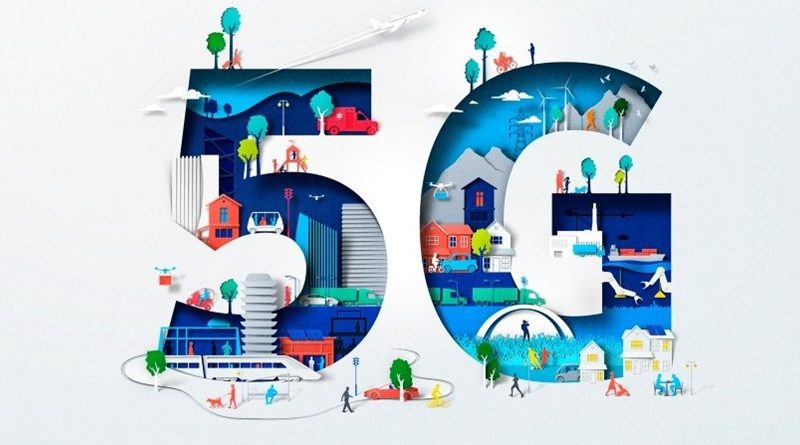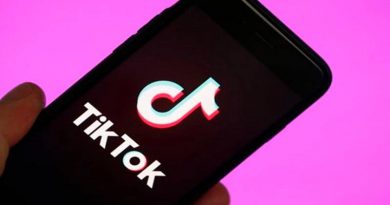With 5G, Small Business can go Toe-to-Toe with the Big Players – a Verizon BusinessView
Faster than a speeding bullet? Definitely.
More powerful than a locomotive? Undoubtedly.
We’re not talking about birds or planes, we’re talking about 5G, the new standard in mobile telecommunication that’s being rolled out over the next few years by America’s largest wireless carriers.

With the ability to carry massive loads of mobile device data at speeds up to 10 or even 100 times faster than those available today, Verizon’s 5G Ultra Wideband network promises to usher in a vast improvement in value and efficiency for businesses that leverage its capabilities.
The ability to collect near real-time data and process it at lightning-fast speeds should help small and midsize businesses (SMBs) leverage the kinds of technologies and knowledge networks that, until now, were only available to the largest, most deep-pocketed firms.
“This really opens the door for a lot of the more traditional, trade-like businesses; plumbing, electricians, the local doctor or a veterinary clinic,” says Steve Szabo, global head of Internet of Things (IoT) Platforms and Solutions at Verizon, the largest U.S. mobile phone provider.
The key to 5G Ultra Wideband is a powerful signal beamed from new low-frequency antennae with enough bandwidth and processing speed to carry nearly as much information as an optical fiber without being tethered to a physical cable. Not only will data travel faster, but it won’t have to travel as far.
With 5G Ultra Wideband, sensors placed on objects from spinning jet turbines to implanted medical devices could send large amounts of vital data instantaneously, warning engineers or doctors of the tell-tale signs that a part is nearing replacement or an insulin pump is running out of medication. Earthquake warning systems could work in near real time, sending data to scientists and public safety officials and helping to give residents precious time to evacuate before their homes are lost in a tsunami.
Buttressing 5G Ultra Wideband speeds is the use of decentralized supercomputers, a process known as multi-access edge computing, that processes most data locally, rather than sending it all the way back to a server farm several cities or even states away. That little uptick in speed opens a world of possibilities for users.
In simplest terms, a feature film that might have taken seven minutes to download over a standard mobile connection could be downloaded in six seconds with 5G. Assisted reality goggles could work remotely in near real time. A doctor’s examining room could connect almost instantly to a regional medical center’s specialists, without the need to build an expensive tele-medicine clinic.
In addition, a plumber could use IoT sensors to remotely monitor the flow of water or steam through a customer’s pipes, and even regularly test the integrity of pipes and valves without having to shut down entire lines.
In smart cities, roadside 5G networks and MEC could ease traffic jams, improve autonomous vehicle safety, and let even the smallest municipalities create bus networks to speed commuters along existing highways, prioritizing vehicles–from buses to cars–with the greatest number of passengers.
Some 25 billion IoT-connected objects will be in place by next year, according to the technology consulting firm Gartner. That opens a world of opportunities for SMBs that know how to jump on the 5G train before it leaves the station.
“Businesses are going to have true visibility into their operations and the operations of their vendors and partners, so they can see just how that affects their bottom lines and their timelines,” Szabo says.
This high-speed data link won’t just be for things: A physician could communicate with a lab hundreds of miles away, or with a specialist in another time zone. They might be able to work together to diagnose a child’s illness essentially in near real time, using an ordinary laptop or camera equipped for 5G. Soon, 5G mobile phones will make this even easier.
IoT sensors can track shipments, letting businesses know exactly where their goods are at almost any given moment.
A technician repairing a small plane engine at a local airport could put on a pair of assisted reality goggles and connect instantaneously to an online repair manual that puts wiring diagrams in front of his face. No more time-consuming moving back and forth from engine to manual. Repairs could be made in a fraction of the time and with far more accuracy.
Smaller businesses could create networks of experts who can weigh in when needed, cutting the cost of deploying technicians and maintaining vital infrastructure. If that airplane tech needs someone more expert to weigh in, that can happen almost instantly, eliminating the need to have the service performed elsewhere.
Manufacturers could use 5G Ultra Wideband and IoT sensors to get rid of the wires that hobble the flexibility of their manufacturing systems. Instead, they could get wire-like high speed anywhere on the factory floor, allowing them to move equipment around to seize new contracts and opportunities for growth.
And 5G Ultra Wideband can provide solutions for low tech industries as well. An architect in South Dakota can reach out to a landscape designer in Los Angeles. Wearing assisted reality goggles, she could add a landscape to the house she’s designing and share that potential image with her client in moments. No need to fly in expensive experts, who can do–and share–most of their work virtually.
So, as 5G takes connectivity to the next level, it also levels the playing field for tech-savvy people, early adopters, and SMB owners. Yet, with all this promise, many smaller businesses fear the cost of adopting the new technology could be a deal-breaker. In uncertain economic times, they may fear it requires too great an investment.
That’s why Verizon is among the data providers that see adapting to 5G as a multi-step strategy. A company could start with testing IoT sensors on its products to monitor performance, using the existing LTE mobile networks to link them together. As newer technology rolls out, companies could gradually invest in upgrades and take ever greater advantage of high speed mobile computing.
“If your small or midsize size business can get rid of all the wires, but get wire-like speed anywhere, that could really transform the way you think about how you want to set up your business, and not get tied down with some kind of infrastructure that doesn’t allow you the opportunity for growth,” Szabo says.
a Verizon BusinessView, inc.com



